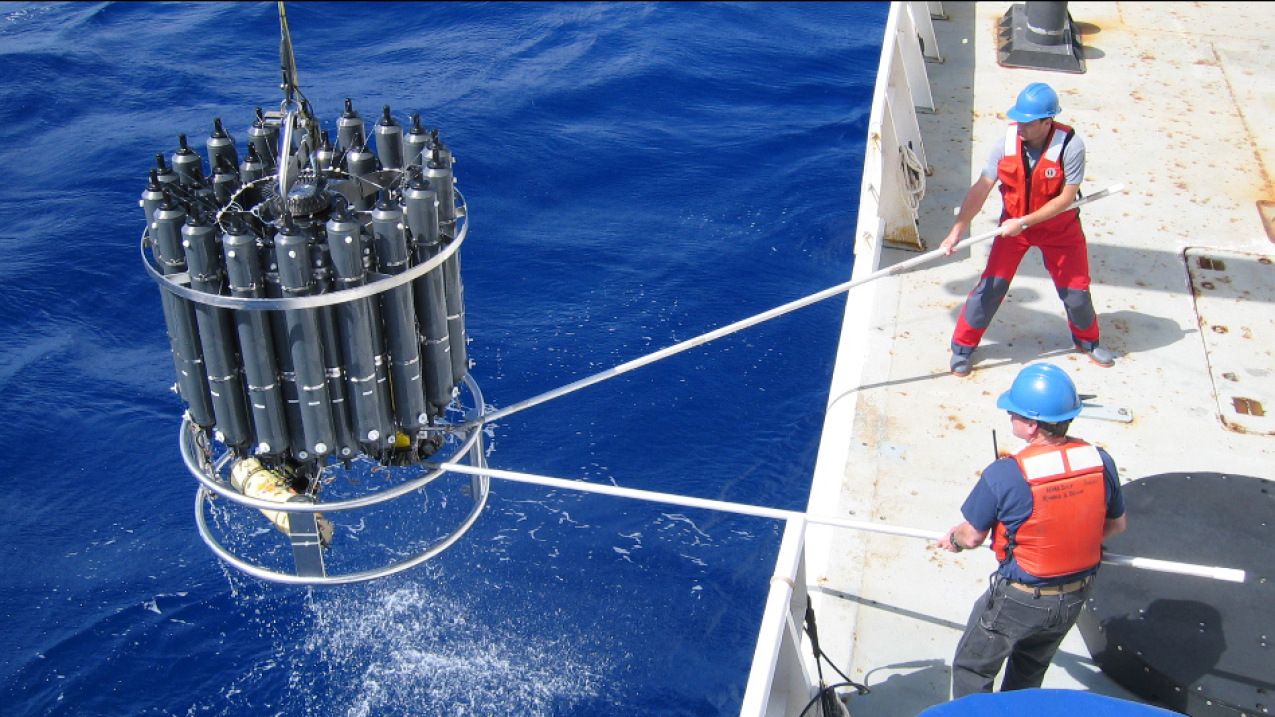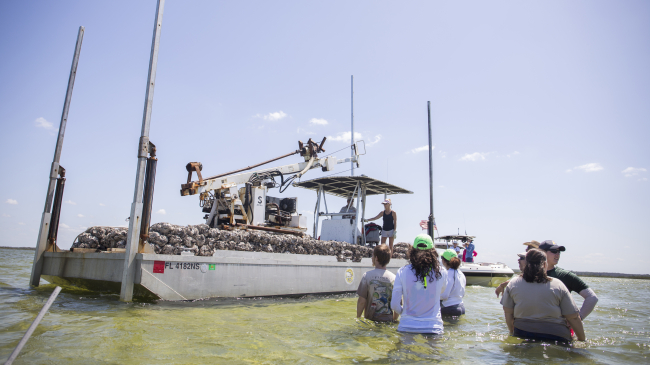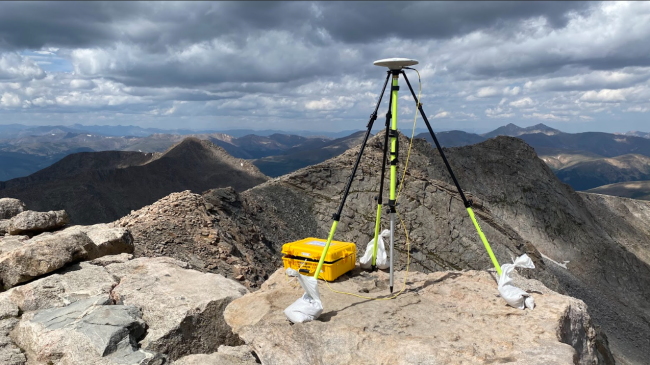
Scientists raise a rosette loaded with water samples to measure carbon dioxide in the ocean. (Image credit: Nicolas Gruber/ ETH Zurich.)
Today, NOAA and the U.S. Department of Energy (DOE) signed a memorandum of agreement (MOA) on future collaborations regarding marine carbon dioxide removal research and development. As a climate solution, marine carbon dioxide removal is an important pathway to achieve the broader Biden Administration goal for the U.S. to reach net-zero emissions of greenhouse gases by 2050.
This MOA will formalize collaboration between NOAA and DOE to share expertise on research and technology development, as well as avoid duplicative work. The MOA makes clear that combining the ocean science expertise of NOAA with the carbon dioxide removal and energy science and technology expertise of DOE will be a powerful way to advance the state of marine carbon dioxide removal science and strengthen the existing relationship between both agencies.
“The science is clear,” said NOAA Administrator Rick Spinrad, Ph.D. “In order to limit global warming to 1.5C or even 2C, we not only have to bring our emissions of greenhouse gases to net-zero rapidly, but we also must remove carbon dioxide from the atmosphere. This MOA, utilizing the great strengths of NOAA and DOE, means we can develop the marine carbon dioxide removal research and technology necessary to tackle the climate crisis.”
“Carbon dioxide removal methods have the potential to mitigate and remove hundreds of millions of tons of harmful carbon dioxide emissions per year,” said DOE Under Secretary for Science and Innovation Dr. Geri Richmond. “DOE is excited to partner with NOAA under this MOA to advance our collaborative research and development efforts in this growing area of marine carbon dioxide removal and slow the harmful effects of climate change.”
The ocean can play a vital role as a solution to human-caused climate change. It naturally absorbs approximately one third of human-emitted carbon dioxide from the atmosphere, and it has the potential to hold over 17 times more carbon than soils and land combined. Enhancing the uptake of carbon dioxide into the ocean through marine carbon dioxide removal via a variety of biological, chemical and engineered methods offers great potential for helping maintain a livable climate and may address existing ocean problems such as surface ocean acidification.
Under the MOA, NOAA and DOE recognize four responsibilities: (1) coordination and collaboration, (2) acceleration of research and development infrastructure, including facilities, data management and feasibility studies, (3) development of protocols for accountable and science-based marine carbon dioxide removal for ecosystem safety, social benefit and economic viability, and (4) the potential for future additional collaboration between both agencies.
The agreement will be the first formalized interagency partnership on marine carbon dioxide removal, which will strengthen existing United States government coordination efforts through the National Science Technology Council’s Marine Carbon Dioxide Removal Fast Track Action Committee.
Read the full memorandum of agreement at NOAA's FOIA Reading Room website.




